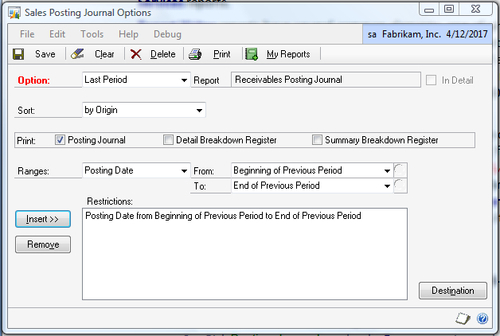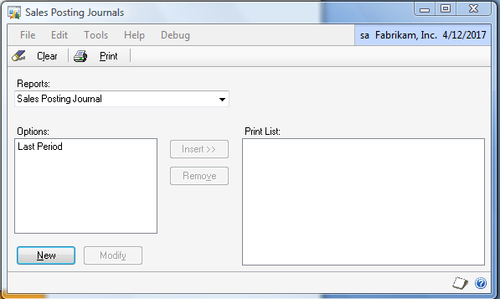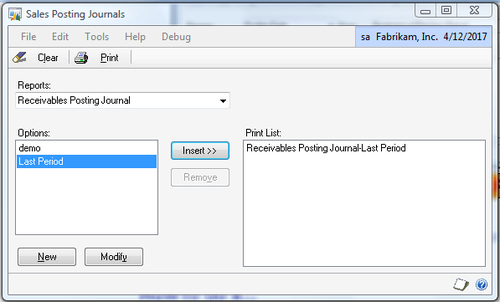Dynamics GP provides a number of features to improve
and simplify reporting. One of the most overlooked features is the
ability to automatically control dates when running reports. That
functionality is the juicy goodness covered in this recipe.
Dynamics GP contains a large
number of built-in reports. These reports were created with the included
Report Writer tool and are often referred to as Report Writer reports
to distinguish them from other report types such as SmartLists or SQL
Server Reporting Services reports.
Report Writer reports have
several common elements, one of which is an Option name. A report
option is simply a named collection of settings for a particular report.
For example, Historical Aged Trial Balance is the name of a report.
Prior to running it a user might name an option for that report such as
"072009 North" to indicate that the report settings have been limited to
information from July 2009 and the North region.
Since many reports are run at
regular intervals the same option can be reused to avoid recreating the
report settings each time. This works fine except for dates. Most users
set the dates in a report option to a fixed period such as "From:
1/1/2009 To: 1/31/2009". This works until it's necessary to report on
February. Then, users have to manually change the date again. Dynamics
GP provides beginning and ending date controls for both fiscal periods
and calendar months to eliminate manual adjustment of dates. Let's see
how it works.
Getting ready
Beginning and ending date
options can greatly simplify reporting. To set up a report option using
the beginning and end of previous periods:
1. Select Sales from the Navigation Pane on the left.
2. Select Posting Journals under the Reports section and select New.
3. In the Option field type Last Period.
4. In the Ranges field select Posting Date from the drop-down menu.
5. In the From date field use the drop-down menu to select Beginning of Previous Period. Repeat this with the To date field and select End of Previous Period:

6. Click on Insert to update the range and click on Save at the top to save this report option:

How to do it...
Once these report options are set up, running a report is incredibly simple.
1. Select Posting Journals from the Sales Area Page again.
2. Select the Last Period option and click on the Insert button in the center.

How it works...
Using beginning and end of
previous period for report dates makes use of the Fiscal Period setup in
Dynamics GP to control report dates. Since much of accounting is
backward looking this provides a fast way to print reports for the last
fiscal month right after month end. Dynamics GP also provides an option
to use the beginning and ending dates of the current period for
in-period reporting.
There's more...
In addition to Periods
Dynamics GP provides an option to use beginning and end dates for the
previous and current month. Since month means something different than
period, this is often confusing to users.
Fiscal period versus Month
In Dynamics GP a period is a
fiscal period as defined in the Fiscal Period setup. A month is a
calendar month. For companies reporting on a calendar basis the two are
interchangeable. For most companies using period is the better option
because it ties reporting to the company's fiscal period in GP. Even for
calendar-based firms using periods instead of months provides some
insurance in case the firm decides to change to a different fiscal
calendar later.
Where Beginning and End of
Previous Month settings are often useful is for tax-based reporting.
Certain taxes, including sales tax, use tax, and payroll tax, are
typically calendar based. These require calendar-year reporting even if a
firm reports financial results based on a fiscal year.
Beyond the period
The focus of this recipe has
been on using beginning and ending period or months to simplify
repetitive reporting. In addition to period and month reporting Dynamics
GP offers beginning and ending fiscal year and calendar year choices as
well.